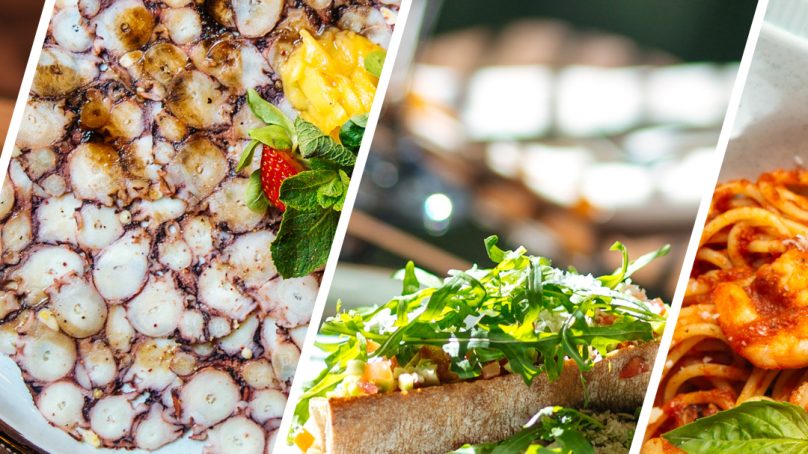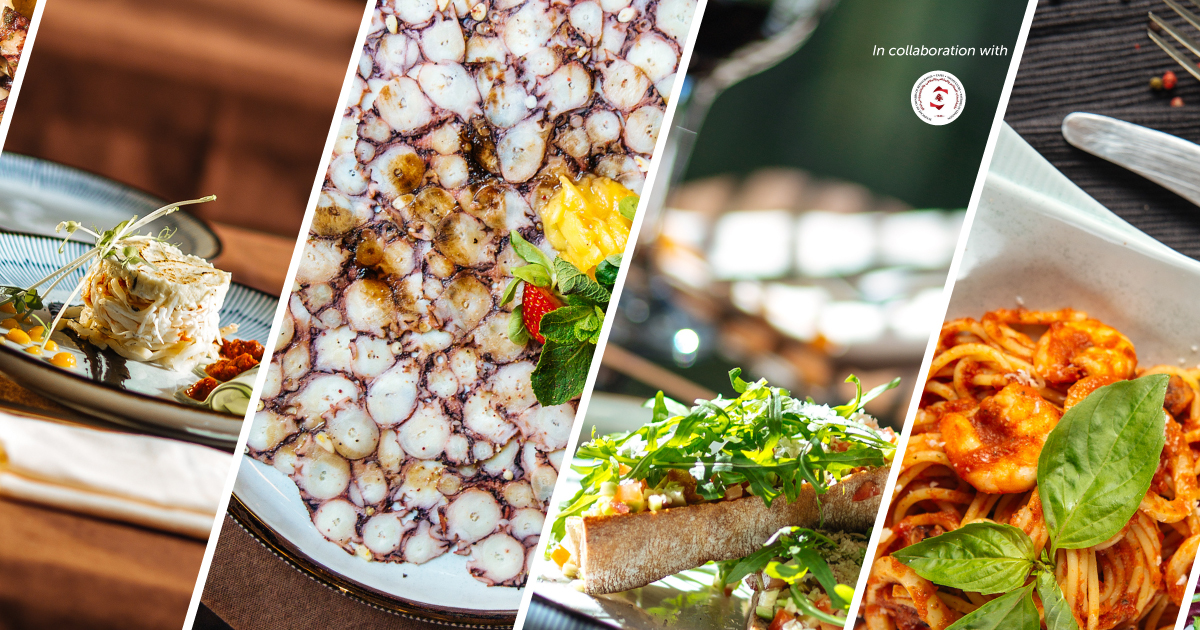

The culinary world has witnessed a dynamic shift in recent years, resulting in an everincreasing contrast between traditional cuisine and global trends. International culinary influences are producing a growing taste for fusion cuisine, which is helping to create a fascinating contemporary F&B landscape, marked by the coexistence of old, new and plenty of innovation in between.
Something old: traditional cuisine
Links to the past
Traditional cuisine is deeply rooted in the cultural and historical aspects of a specific region or community. A prime example is Italy’s rich culinary heritage, where the true essence of our alltime favorites, such as pasta, pizza and risotto, lie in the regional variations that showcase the diversity of Italian culture.
All about authenticity
The use of locally sourced and seasonal ingredients is a hallmark of authentic cuisine. This not only adds unique flavors, but also reflects the availability of resources in a particular area, highlighting its unique culinary identity.
Traditional cuisines will be aligned with the local climate and resourcing challenges. Regional variations can be found within the traditional cuisine of a country or culture. Different areas may have unique ingredients, spices or cooking styles that contribute to the diversity of the overall culinary tradition.
A strong social side
Authentic dishes often make use of traditional cooking techniques that have been preserved and passed down through generations within families or communities. This can include specific ways of preparing, cooking, storing and presenting food. There is a strong social aspect to authentic cuisine, often involving communal cooking and shared meals, which reinforces a sense of comfort and familiarity. In addition, traditional culinary experiences have become a key draw for tourists seeking authenticity during their trips, which has led to a renewed interest in preserving and showcasing local cuisines.
Something new: global/fusion cuisine
Integrating flavors
In contrast, global cuisine stands out as an ever-evolving phenomenon. An increasingly interconnected world has led to culinary boundaries blurring, giving rise to what we commonly refer to as fusion dishes and the integration of diverse flavors. These trends bring a sense of excitement and innovation to the food world. They reshape the way chefs and food enthusiasts approach cooking and dining, sparking new levels of creativity and experimentation, and the blending of numerous culinary traditions.
Cross-cultural cooking exchanges
Cooking has become a celebration of diversity, reflecting the global exchange of ingredients, cooking techniques and culinary traditions. One example is the popular dish sushi burrito, which is a fusion of Japanese and Mexican cuisines, marrying the delicate art of sushi with the bold flavors of Mexican ingredients. Recipes are travelling across borders, galvanized by this increase in cross-cultural exchanges.
A flavorful discovery
Global F&B trends are also being fueled by the changing tastes of consumers, who are increasingly keen to explore and experiment with food from around the world, while simultaneously revealing an appreciation of different cuisines and diverse flavors. As the number of people traveling farther afield continues to rise, so, too, does the trend for challenging the traditional notions of taste, encouraging chefs to push boundaries and innovate. Crosscultural living and the coexistence of diverse communities in cosmopolitan cities has seen chefs draw inspiration and creativity from their immediate surroundings, resulting in fusion cuisine that reflects the multicultural fabric of the melting pots that define their communities.
Another notable trend is the demand among travelers for unique experiences, whether in their hotel stays or when dining, which also offers chefs plenty of opportunities to experiment with unconventional flavors and culinary techniques. In addition, we are seeing collaborative ventures between chefs from diverse culinary backgrounds, which is fostering new levels of creativity, resulting in everevolving fusion dishes that benefit from a blend of expertise and flavors.
New trends and preferences
Technology is playing a key role in shaping new, unique dining experiences.
From molecular gastronomy to high-tech cooking methods, cutting edge innovation is enabling chefs to push the boundaries of fusion cuisine. Industry leaders are also adapting both traditional and fusion cuisine to accommodate evolving consumer preferences for health-conscious options. An increased focus on health and wellness has led to rising interest in plant-based diets, organic ingredients and healthier versions of classical dishes. Chefs have also become mindful of sourcing ingredients responsibly and reducing food waste, resulting in more sustainable practices.
Social media, culinary shows, blogs and digital platforms, such as YouTube, have helped to heighten the hype around diverse cuisines and culinary trends, and make them more popular. These powerful mediums have provided an incentive for chefs to increase the visibility of fusion cuisine by sharing aesthetically pleasing culinary innovations. In turn, inspired food bloggers are only too keen to replicate these dishes and contribute to a culture of digitally interconnected culinary exploration.
Balancing old and new
Traditional and global cuisines are two sides of the same coin, each offering a distinct perspective on the culinary world. Traditional cuisine serves as a testament to the deep roots and cultural identity of a location, while global cuisine reflects the dynamic nature of our interconnected world. As societies evolve and interact, culinary traditions inevitably also adapt and change to reshape the gastronomic landscape. Creating genuinely new fusion dishes is far from challenge free, however. Balancing different culinary elements to produce a harmonious and palatable dish in which the integrity of the ingredients is retained requires skill and an in-depth understanding of the diverse flavors involved.
Chefs and restaurants have a responsibility to ensure that they retain the traditional flavors that are culturally significant and make each cuisine special, when innovating in the kitchen. Finding a balance in the kitchen between tradition and culinary creativity is key. In this way, diners are able to appreciate the array of global cuisines available, while the culinary heritage of locations and destinations remains deservedly protected, respected and cherished.

board member of the Syndicate of Owners of Restaurants, Cafes, Night-clubs & Pastries in Lebanon










